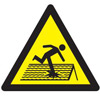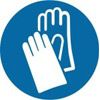Passing the CSCS health and safety test or what is now known as the CITB Health, Safety and Environment test is the first step towards acquiring your CSCS card.
Having a CSCS card is one of the most important qualifications a construction worker in the UK can have, it’s so important that almost pretty much all construction companies make their workers take the CSCS health and safety test before they even consider giving them a job.
Workers are not the only ones required to have a CSCS card onsite, visitors that are regularly onsite will also need to have a valid CSCS card. They too will need to take the Health Safety and Environment test for Operatives to get their yellow CSCS card. The test lasts for 45 minutes and you will have to answer 50 multiple-choice questions and score at least 45 out of 50 for the operatives test before you can pass and apply for your CSCS card.
The main objective of the CSCS health and safety test is to reduce the number of onsite accidents by educating workers on how to carry out their jobs in the safest way possible, the test itself is based on different aspects of health and safety in the construction industry. Here are a few questions to help you practice for your CSCS health and safety test.
1. Site inductions should be attended by?
a. Supervisors only
b. Everyone who will be onsite
c. Managers only
d. Short-term visitors only
2. Being exposed to engine oil can cause?
a. Hearing problems
b. Skin problems
c. Lung cancer
d. Temporary loss of breath
3. Which of these are common causes of accidents on a construction work site?
a. Slips, trips and falls
b. Falling from height
c. Inhaling hazardous substances
d. All of the above
4. For maximum safety disposable masks should be discarded after?
a. 6 days
b. 2 weeks
c. 1 day or 1 shift
d. 3 days
5. Besides hearing loss what can excessive noise cause?
a. Headaches
b. Temporary blindness
c. Skin disease
d. Heart disease
6. What does this sign mean?

a. Danger fragile roof
b. Caution tripping hazards on roof
c. No entry roof unsafe
d. Danger roof incomplete
7. What does this sign mean?

a. Eye protection recommended
b. Opaque eye protection must be worn
c. Eye protection is not needed beyond this point
d. Eye protection must be worn
8. What does this sign mean?

a. Hand washing area
b. Protective gloves must be worn
c. Protective gloves recommended
d. Use barrier cream
9. Which of the following factors won’t cause a nuisance for neighbours at a building site?
a. Noises and vibrations
b. Lighting that has been carefully placed over a site
c. Dust and fumes
d. Site transport vehicles
10. What should you do if you are in the middle of a noisy activity and you realize that your work will not be completed within the normal working hours at your site?
a. Ensure you’re wearing the correct PPE and carry on working
b. Let the neighbours know that you will be working later than normal
c. Create a few shortcuts to try and get the work done as soon as possible
d. Stop working and let your management team know
11. Why should you never store heavy work materials under a tree?
a. The roots of the tree could be damaged
b. There is a danger of mould forming on the materials
c. This could cause damage to tree branches
d. Tree sap poses a threat
12. Why is it important for you to understand the fire and emergency procedures at your work site?
a. It tells you where the fire exits and assembly points are located
b. It tells you where emergency equipment is located
c. It tells you how to use firefighting equipment
d. It tells you who to look for in the building if there is a fire
13. _____ is responsible for managing health and safety on site.
a. Your supervisor
b. The site manager
c. The Health and Safety Executive
d. Your health and safety rep
14. An injury on site is usually recorded in ______.
a. Accident book
b. An MSDS Sheet
c. Your signing-in sheet
d. Your bulletin board
15. What is the main hazard associated with kneeling in wet cement?
a. Skin rash
b. Eczema
c. Skin burns
d. Dermatitis
16. What is covered in a Control of Substances Hazardous to Health (COSHH) assessment?
a. How to work safely in confined spaces
b. How to protect your hearing using noise assessments
c. How to protect yourself when lifting heavy loads
d. How to protect yourself when using hazardous substances
17. You have to carry out a job that requires using a hazardous substance, who is responsible for explaining the risks and explaining the safe method of working before you start?
a. Your supervisor or employer
b. Your site security
c. The HSE
d. Your health and safety rep
Check out our latest CSCS Health and Safety test for more practice questions from the 2024 test.
